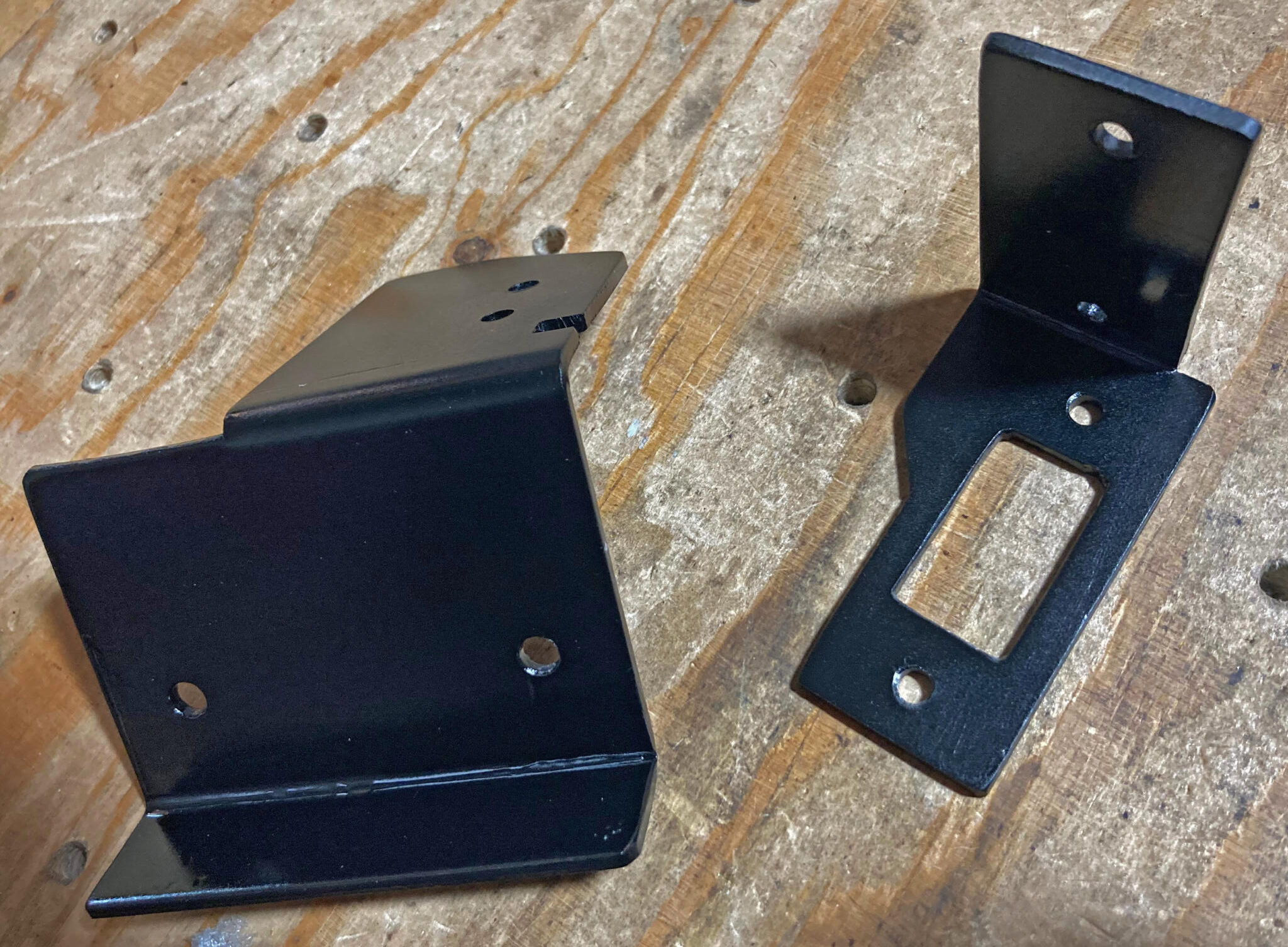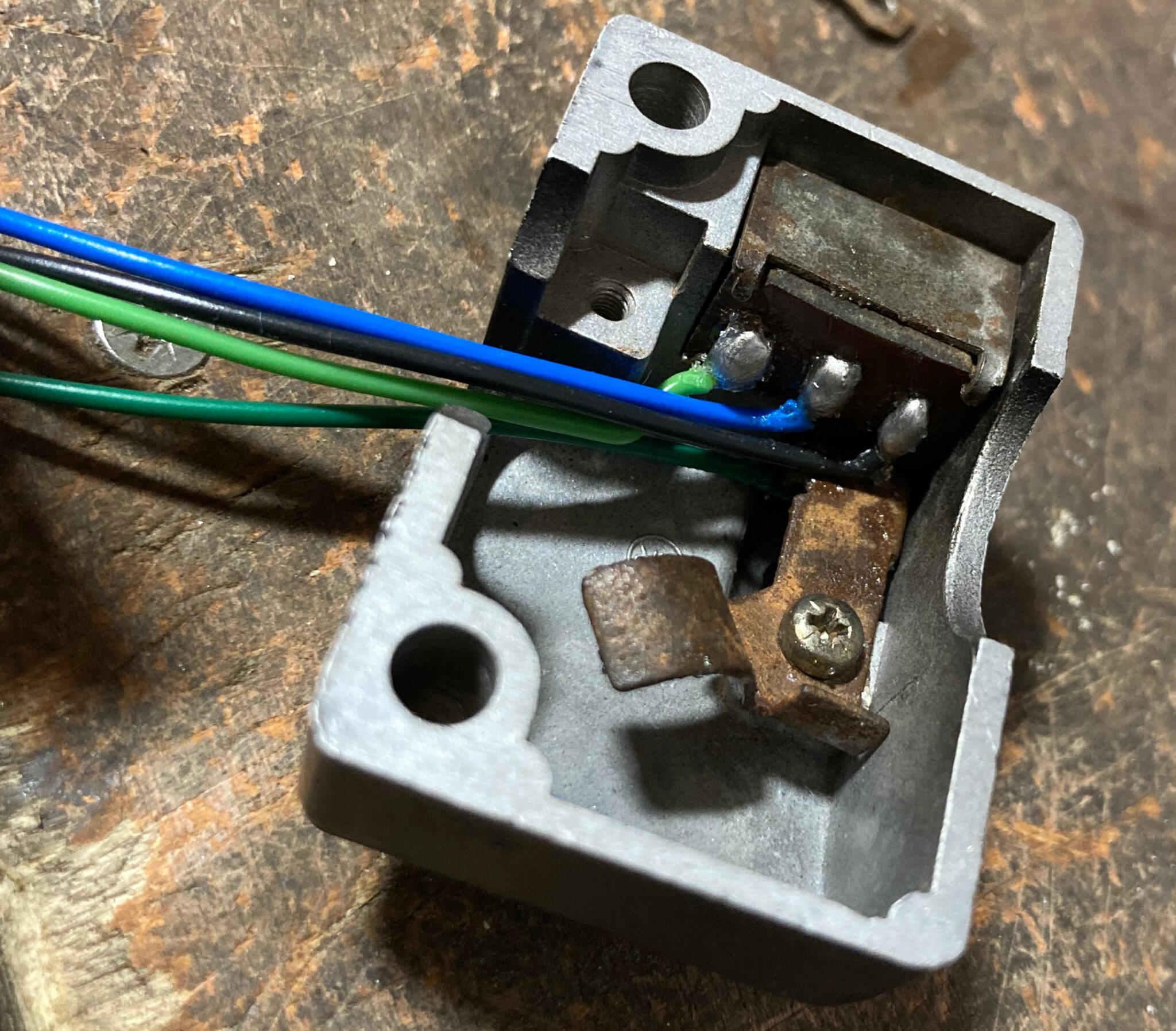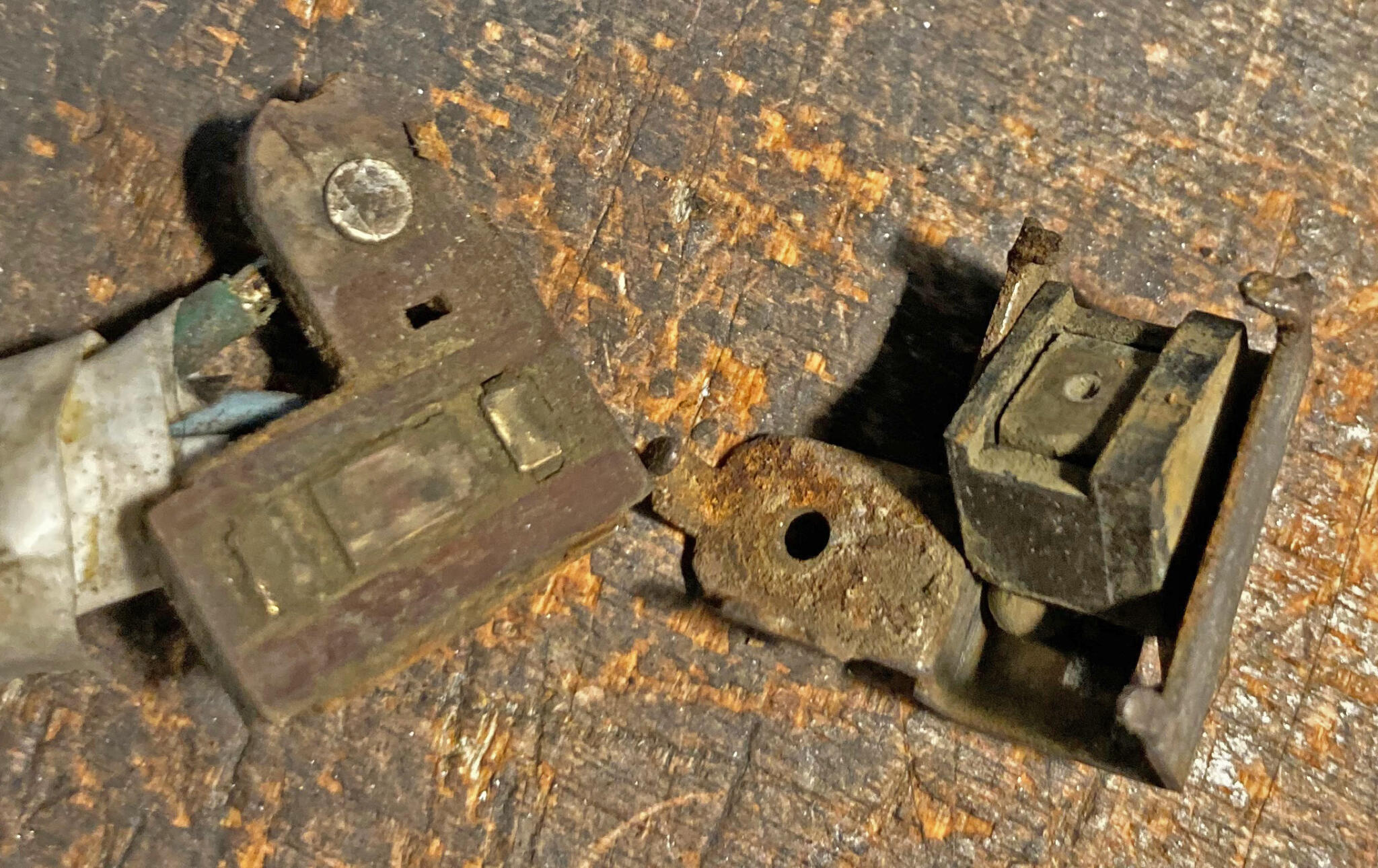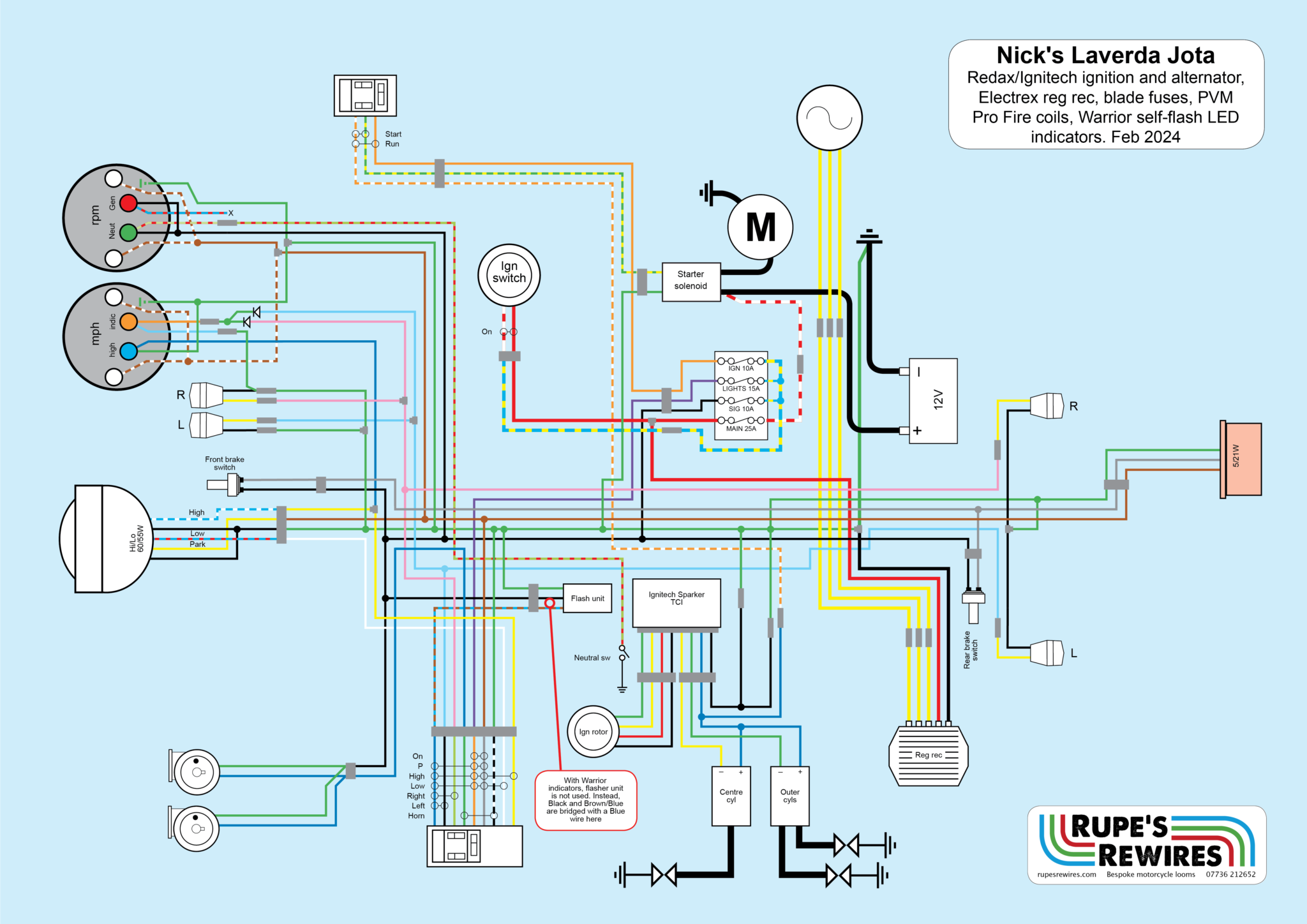
Now doesn’t that look better and handier than the usual Jota clip-ons? Side panel to be added by owner

When you change the ignition on a Jota, everything has to shuffle round to make room. Made from 3mm ally plate, and painted by my colleague Alex, these brackets are the new homes for the solenoid (left) and fuse box

…the finished switch looks like this. You can replate the rusty cable guide if you have acres of time. I just paint it with silicone grease
Nick’s Laverda Jota
Hello to another highly-prized Jota. This one had stopped charging and started blowing its main fuse, so owner Nick was keen to banish all possible sources of evil. Along with the bike he brought along new indicators, a new alternator and stator, a Redax ignition kit (sold by Keith Nairn at Laverda Scozia), a new battery and reg rec, and a handful of handlebar switches.
He was also keen to banish the clip-on bars and get a sensible riding position instead. Good man.
Rewiring a Jota always seems to require repositioning everything and finding creative ways to secure the battery, which is always smaller these days than the fish tank-sized original. Besides the usual frenzy of custom bracketryand spacers, I ended up making a plywood packing block to allow use of the original battery strap.
We tried a couple of sets of bars (Norton Commando and CB550), and settled on the Honda ones. They look perfect and give a good riding position. The only downside is the clamp serrations, which are spaced a bit wider.
Nick had sourced a new reg rec, which didn’t have the white wire to run the charge warning light. We agreed it was no great loss.
His Warrior LED indicators were a new one on me. They flash sequentially (like an Audi) all by themselves – no flasher unit required. (In fact if you use a flasher unit they go haywire.) This is fine until you look at the indicator warning light on the rev counter. It just stays on while they are flashing. After discussing this with Nick I left the wiring to permit future fitting of more normal indicators. If we were sticking with the Warrior ones I imagine you could wire in a flasher unit just for the indicator light, and make it behave normally.
The Redax ignition kit is designed by a very enthusiastic and expert Australian Laverda shop. It came with copious, carefully-written instructions but was very sketchy about how to organise the cables to avoid the rotor. In the end I ignored them and worked out a safe solution. The kit is a combination of PVL, Ignitech and Sachse components (all high quality European) mixed with some very nicely machined Aussie extras.
Sadly, when I pressed the starter the motor it did little more than cough. The carbs turned out to be chock full of ethanol-derived gunge. Nothing for it but to strip and rebuild. Nick is tackling that one.
I love working on Laverdas. They are so logical and well designed. And I think this one in particular looks smashing with its regular bars.

The old alternator rotor plate turns out to be a handy way to turn the crank back and forth as you set up the timing. Big shiny thing on the left is a Laverda rotor puller tool

Here we are in full swing. The Redax instructions on the laptop (all 22 pages of them) were confused on how to route the cables. I got there in the end






